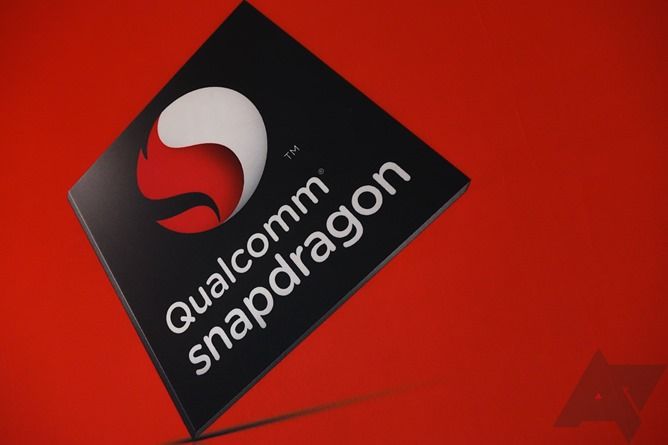The march of chipset progress goes on: Qualcomm announced this morning that its new Snapdragon 835 chipset is on the way, utilizing Samsung's new 10 nanometer fabrication process, as well as the latest generation of its Quick Charge technology. Qualcomm did not share many details about its newest flagship processor, only claiming unspecified increases in speed, efficiency, and a reduction of physical space used by the chip (all at least partly a result of the switch from 14nm to 10nm). Qualcomm says Snapdragon 835 devices will be arriving on the market in the first half of 2017. Number of cores and other improvements were not disclosed - this appears to be a strictly preliminary announcement. The most we got was this, some figures expressing the theoretical advantages of the new 10nm process.
Compared to its 14nm FinFET predecessors, Samsung’s 10nm technology allows up to a 30% increase in area efficiency with 27% higher performance or up to 40% lower power consumption.
These figures should not be interpreted to represent increases in performance or efficiency of the Snapdragon 835 versus the outgoing Snapdragon 820 and 821 - they merely show what the reduced transistor size can achieve on paper. It's still impressive: Qualcomm's chip is the first to be launched on this new process, and shrinks like this always result in noticeable performance and power consumption improvements.
Quick Charge 4 received a more thorough introduction, and perhaps unsurprisingly the headline feature of the newest fast charging implementation from Qualcomm is compliance with the USB-IF's specifications for USB-C and the USB Power Delivery standard. So, if Qualcomm is now using the standard voltage, amperage, communication protocol, and interface that everyone with USB Power Delivery is, what's left for Quick Charge 4 to do? Well, if you ask me, that's a slightly harder sell than Qualcomm wants consumers and the industry to think. What Qualcomm claims is that through its advanced power management software and circuitry, it can charge phones more quickly, efficiently, and safely than just any old USB-PD device.
Qualcomm says that despite being the same wattage as the outgoing 3.0 specification (18W), Quick Charge 4 can charge a device up to 20% faster thanks to improvements in how the power is delivered and intelligently adapts to the state and heat of the battery, and by reducing thermal inefficiencies in the charging process. That is: Qualcomm very much believes that not all USB-PD charging systems are created equal, and this is probably their pitch to manufacturer partners who would still need to use Qualcomm-certified power management ICs to take advantage of Quick Charge 4.
We've got some slides below for you to peruse, and there is a fair bit of information to tear through here. Qualcomm's play with bringing Quick Charge into the USB-PD fold is also to take advantage of, ahem, "awareness" of the potentially explosive nature of lithium ion batteries, and play up Quick Charge's enhanced focus on safety. It's not clear how appreciably safer Quick Charge is than any other fast charging solution, though, and the one thing that does seem safe is to say Qualcomm is trying to maintain Quick Charge's market dominance by appealing to the post-Note7 sensibilities of manufacturers and consumers alike.
As for information about the 835, given devices are coming in the first half of 2017, I expect we'll be hearing more about it around that time.

